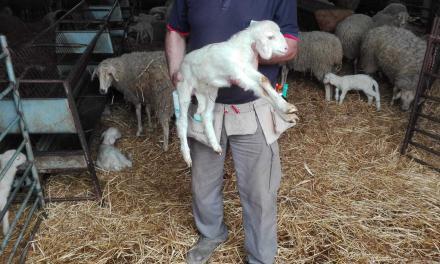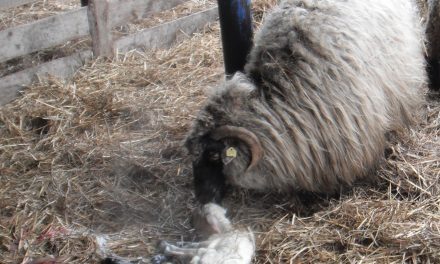This post is also available in:
![]()
![]()
![]()
![]()
![]()
Plaquette sur le site idele.fr
Country: France
Dairy or/and meat sheep: Dairy and meat
Source of information: Institut de l’Elevage
Level of solution:
X |
Knowledge |
|
|
Practical |
|
|
Just Being Tested |
Aim: This booklet aims to provide a collection of practices and recommendations in terms of design and hygiene of shed according to the age of the lambs (from birth to weaning)
Description:
- 44 pages document to remind the main health risks facing lambs and the preventive measures to control them indoor.
- Tools to provide the latest recommendations in terms of design and maintenance of shed according to the age of the lambs (and therefore the potential risks).
Expected benefits: better design and hygiene of shed and ultimately reduce the risk of lamb infections.
Prerequisites and/or limits: the support of a specialized technician remains essential to modulate advices according to the situation of the herd.
Tips and Tricks
A barrier to prevent lambs from jumping in the trough
Melanie’s rack system for sheep hurdles
Preserving jar rubber seal (as a lamb ID collar)
Cage to provide water to lambs
Barrier to restrict the access of the lambs to their mothers
Portable tray with material to manage newborn lambs
Car to transport lambs to the lactation room
Colostrum conservation in single-dose plastic bottles
Tripod to handle newborn lambs
Multi-pocket belt to manage newborn lambs
References:
- Dwyer, C.M., Conington, J., Corbiere, F., Holmoy, I.H., Muri, K., Nowak, R., Rooke, J., Vipond, J., Gautier, J.M., 2016. Invited review: Improving neonatal survival in small ruminants: science into practice. Animal : an international journal of animal bioscience 10, 449-459
- Rooke, J.A., Arnott, G., Dwyer, C.M., Rutherford, K.M.D., 2015. The importance of the gestation period for welfare of lambs: maternal stressors and lamb vigour and wellbeing. J. Agric. Sci. 153, 497-519
Expected impacts:
| 1. Level End-User Assessment (Partner) | ||
| Country | France | |
| Partner | Idele | |
| Topic | LAMBING – MANAGEMENT | |
| Issue | Sheep shed (air circulation, bedding, hygiene etc.) | |
| Solution No/Name | Lambs in good health: good breeding practices and adapted shed | |
| Service provider/technicians+vet or farmers | ||
| Benefit | ||
| Benefit expected | Increase productivity Less abortion Less mortality Less workload Better labour organisation Less stress for the farmer |
|
| System | ||
| Is the solution suitable for various production systems | in shed | |
| If no – for which system | ||
| Cost | ||
| What are the asset costs | 100 and >10 000 depending of the starting situation | |
| What are the maintenance costs | 50-100 | |
| Any limits to its applicability | The shed design and facilities presented are adapted to French situations. The cost for the farmer can vary from <100 € if only the practices are to be changed, to more than 10 000 € if investments are to be made on the shed. | |
| Work Load | ||
| Farmers | Service provider/tech.-vet-others | |
| How much time is required to prepare and implement the solution | >=1week | >=1week |
| How many people is needed to implement the solution? | 1 | |
| Timing | ||
| How long it takes to get results? | Immediate | |
| How long it takes to see an effect on sheep productivity? | current production period (if on practices); >next production period (if investments) | |
| Equipment/Facility | ||
| Farmers | Service provider/technicians-vet-others | |
| What kind of equipment/tool are necessary? | shed | |
| Skill/Knowledge-Training (farmer) | ||
| Does the solution need any specific skill/knowledge or training? | no | |
| How much time will be required for training | ||
| Wider Environment | ||
| Is there any particular regulation link to the solution? | Yes (building construction | |
| Does the solution need any particular structure or organisation? | no | |
| Other Comments | ||






